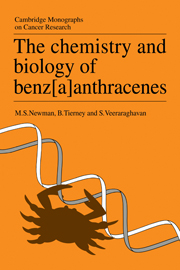10 - Mutagenicity
Published online by Cambridge University Press: 07 September 2010
Summary
Introduction
Chemical carcinogenesis is currently believed to result from the interaction of a carcinogen with the DNA of a target tissue. The mutational events which occur due to this DNA adduct formation may possibly lead to malignant transformation of the cell and to subsequent tumour development. Mutagenicity test systems therefore provide a quick, cheap and reliable method for examining various aspects of the cellular interactions of chemical carcinogens such as: pathways of metabolic activation, the ability of various cell types to produce mutagenic species, and the screening of potentially hazardous chemicals for mutagenic activity. These mutational events may provide clues to the mechanism of chemical carcinogenesis in animals and humans.
The types of mutational test systems available can be divided broadly into two groups, bacterial and mammalian, and some require the addition of an activating system, such as a liver homogenate or a particular cell line, to ‘activate’ the chemical. In addition mammalian cells may undergo malignant transformation by a chemical carcinogen: a direct link between the cell transformation and cancer being shown by the injection of such cells into an animal and the development of tumours. There have been several extensive reviews on short-term mutagenicity test systems (Brookes, 1977; Hollstein et al., (1979) to which the reader is referred for further information.
Mutagenicity of benz[a]anthracene
Benz[a]anthracene is mutagenic in a number of short-term mutagenicity testing systems, these include the widely used Ames bacterial system employing Salmonella typhimurium strain TA98 (McCann et al., 1975) or TA100(Norpoth et al., 1984).
- Type
- Chapter
- Information
- The Chemistry and Biology of Benz[a]anthracenes , pp. 144 - 159Publisher: Cambridge University PressPrint publication year: 1988



